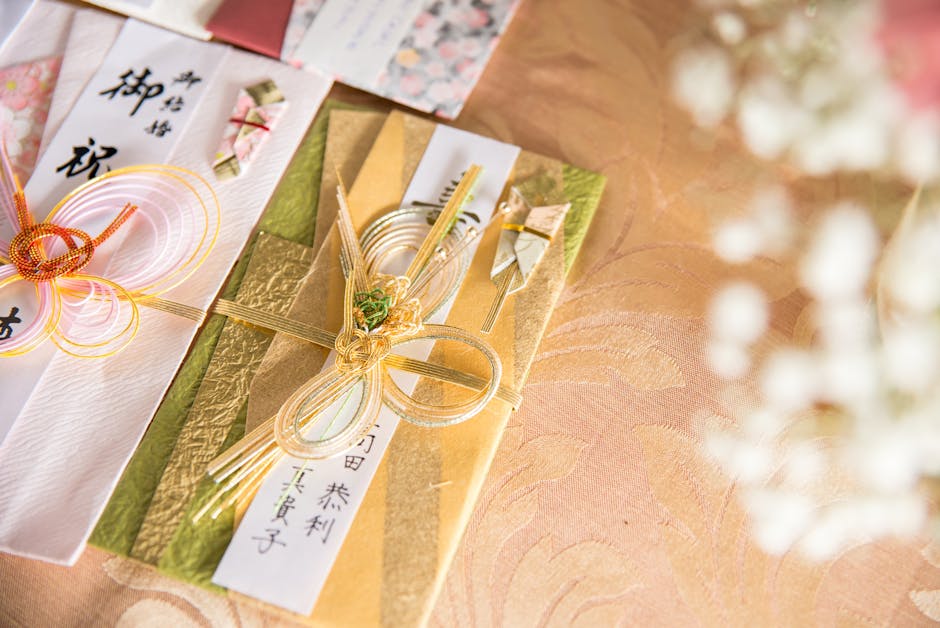The Art of Gift-Giving: A Comprehensive Guide
Gift-giving is an age-old tradition that spans cultures and time periods, encompassing a myriad of meanings, intentions, and emotions. From birthdays to weddings, holidays to special occasions, the act of giving a gift is a universal language of love, appreciation, and connection. In this comprehensive guide, we delve into the art of gift-giving, exploring its historical roots, modern-day significance, and the intricate nuances that make it a fascinating aspect of human interaction.
The Evolution of Gift-Giving

By Mayumi Maciel via Pexels
Gift-giving dates back to ancient civilizations, where offerings were presented to deities as a sign of reverence and gratitude. The act of exchanging gifts among individuals emerged as a way to strengthen social bonds, show respect, and signify goodwill. In medieval times, gifts were often symbols of wealth and power, used to demonstrate one’s status and influence in society.
Today, gift-giving has evolved into a multi-billion dollar industry, with retailers, online platforms, and artisanal shops catering to every conceivable occasion and recipient. The rise of e-commerce has made it easier than ever to browse, select, and send gifts to loved ones across the globe, adding a new layer of convenience to this age-old tradition.
While the essence of gift-giving remains the same – a gesture of thoughtfulness and generosity – the art of choosing the perfect gift has become more complex in a world inundated with options. From personalized gifts to experiential presents, the possibilities are endless, making the act of giving a gift both exciting and daunting.
The Psychology of Gift-Giving

By Esra Kaya via Pexels
Gift-giving is deeply rooted in psychology, with studies showing that both the giver and the recipient experience positive emotions during the exchange. The act of giving triggers a release of oxytocin, the ‘love hormone’, in the brain, leading to feelings of happiness, satisfaction, and social connection.
For the giver, the process of selecting a gift involves thoughtful consideration of the recipient’s preferences, interests, and needs. This act of empathy and understanding strengthens relationships and fosters a sense of intimacy and closeness. On the other hand, the recipient of a gift feels valued, appreciated, and cared for, leading to a sense of belonging and connection with the giver.
Psychologists also suggest that the act of giving is inherently altruistic, as it involves placing the needs and desires of others above one’s own. This selfless act of generosity not only benefits the recipient but also brings emotional rewards to the giver, creating a positive feedback loop of goodwill and gratitude.
The Five Love Languages and Gift-Giving

By Pixabay via Pexels
In his groundbreaking book, ‘The Five Love Languages’, Dr. Gary Chapman identified five primary ways in which people express and receive love: words of affirmation, acts of service, quality time, physical touch, and receiving gifts. According to Chapman, each individual has a dominant love language that influences how they perceive and value expressions of love and affection.
For individuals whose love language is ‘receiving gifts’, the act of gift-giving holds significant emotional value. These individuals appreciate thoughtfulness, effort, and personalization in the gifts they receive, viewing them as tangible symbols of love and appreciation. Understanding and speaking the love language of ‘receiving gifts’ can deepen relationships and foster emotional intimacy between partners, friends, and family members.
By aligning the act of gift-giving with the recipient’s love language, givers can create meaningful and lasting connections that transcend material possessions. This personalized approach to gift-giving ensures that the gifts exchanged carry emotional significance and are cherished for years to come.
The Art of Thoughtful Gift-Giving
Thoughtful gift-giving goes beyond the material value of the gift itself, focusing instead on the emotional impact and sentiment behind the gesture. By considering the recipient’s preferences, tastes, and interests, givers can select gifts that resonate on a deeper level and convey a message of love and appreciation.
One of the key principles of thoughtful gift-giving is to listen and observe the recipient’s cues, paying attention to their likes, dislikes, and aspirations. By taking the time to understand the recipient’s personality and preferences, givers can choose gifts that are both meaningful and memorable, reflecting the unique bond they share.
Personalization is another hallmark of thoughtful gift-giving, as it conveys the effort and attention to detail that went into selecting the gift. Whether it’s a monogrammed item, a custom-made piece of art, or a handcrafted gift, personalized presents add an extra layer of significance and thoughtfulness to the exchange, making the recipient feel truly special.
Thoughtful gift-giving also involves considering the occasion and the context in which the gift is being given. Whether it’s a birthday, anniversary, holiday, or just because, tailoring the gift to suit the event and the recipient’s expectations ensures that the gesture is well-received and appreciated. By matching the gift to the occasion, givers can convey their sentiments in a meaningful and authentic way.
The Importance of Reciprocity in Gift-Giving
Reciprocity is a fundamental principle in gift-giving, as it establishes a sense of balance and mutual exchange between the giver and the recipient. When a gift is given, the recipient is expected to reciprocate in kind, either with a tangible gift or with gestures of gratitude and appreciation.
Reciprocity plays a crucial role in maintaining social relationships and preventing imbalance or exploitation in the gift-giving process. By reciprocating a gift, the recipient acknowledges the thought and effort that went into the gesture and reinforces the bond between the giver and the recipient.
However, reciprocity should not be viewed as a transactional exchange, but rather as a way to express gratitude and strengthen the emotional connection between individuals. The act of reciprocating a gift should come from a place of genuine appreciation and goodwill, rather than obligation or duty.
In some cultures, reciprocity is considered a sacred duty, with elaborate rituals and customs governing the exchange of gifts. These cultural norms and traditions play a significant role in shaping the art of gift-giving and defining the rules of reciprocity within a community.
Gift-Giving Etiquette and Social Norms
Gift-giving etiquette varies across cultures and social settings, with different norms and expectations governing the exchange of gifts in different contexts. Understanding and adhering to these etiquette rules is essential for navigating the complexities of gift-giving and ensuring that the gesture is well-received and appreciated.
In Western cultures, gifts are often exchanged on special occasions such as birthdays, holidays, weddings, and anniversaries. It is customary to bring a gift when invited to someone’s home for a meal or a gathering, as a token of appreciation for the host’s hospitality.
Gift-giving in business settings follows a set of formal guidelines and protocols, with gifts exchanged as a way to build rapport, show appreciation, or celebrate milestones. In these contexts, the value of the gift, the timing of the exchange, and the appropriateness of the gesture are carefully considered to ensure professionalism and respect.
When giving gifts in a personal or romantic relationship, it’s important to consider the recipient’s preferences, tastes, and expectations. Thoughtfulness, personalization, and sincerity are key factors in selecting the perfect gift that conveys your feelings and strengthens your bond with the recipient.
Gift-giving etiquette also extends to the act of receiving gifts graciously and expressing gratitude for the gesture. Whether you love the gift or not, it’s important to acknowledge the giver’s thoughtfulness and effort, and to show appreciation for the sentiment behind the gift.
Expert Opinions on Gift-Giving
Experts in the field of psychology, sociology, and anthropology have studied the art of gift-giving from various perspectives, shedding light on the motivations, emotions, and social dynamics that drive this age-old tradition. According to Dr. Elizabeth Dunn, a psychologist and researcher at the University of British Columbia, giving gifts can lead to greater happiness and well-being for both the giver and the recipient.
Dr. Dunn’s research suggests that spending money on others, rather than on oneself, can lead to a greater sense of fulfillment and satisfaction. By giving gifts that benefit others and strengthen social connections, individuals can experience a deep sense of joy and contentment that transcends material possessions.
Professor Marcel Mauss, a sociologist and anthropologist, explored the cultural and symbolic dimensions of gift-giving in his seminal work, ‘The Gift’. According to Mauss, gifts are not just objects or commodities, but symbolic gestures that carry social, emotional, and spiritual significance within a community.
Mauss’s theory of the ‘gift economy’ suggests that gifts create bonds of reciprocity, obligation, and solidarity between individuals, shaping social relationships and reinforcing social cohesion. In this sense, gift-giving is not just an individual act, but a collective ritual that binds communities together and strengthens the fabric of society.
Frequently Asked Questions About Gift-Giving
Q: What are some thoughtful gift ideas for special occasions?
A: Thoughtful gift ideas include personalized gifts, handmade items, experiential gifts, and meaningful keepsakes that reflect the recipient’s personality and interests.
Q: How much should I spend on a gift for a friend or family member?
A: The amount you spend on a gift depends on your budget, the occasion, and your relationship with the recipient. It’s the thought and sentiment behind the gift that matter most, not the price tag.
Q: What should I do if I receive a gift I don’t like or need?
A: If you receive a gift that doesn’t suit your tastes or needs, it’s important to express gratitude for the gesture and acknowledge the thoughtfulness behind the gift. You can consider regifting the item or donating it to someone who might appreciate it more.
Conclusion
To wrap things up, the art of gift-giving is a timeless tradition that holds immense emotional value and significance in human relationships. Whether it’s a simple token of appreciation or a grand gesture of love, the act of giving a gift transcends material possessions and communicates heartfelt sentiments that words alone cannot convey.
By understanding the psychology, sociology, and cultural norms that shape the practice of gift-giving, we can become more thoughtful, empathetic, and generous individuals who enrich the lives of others through our gestures of love and appreciation. The art of gift-giving is not just about the gift itself, but about the emotions, intentions, and connections that it symbolizes, making it a powerful expression of human kindness and compassion.




